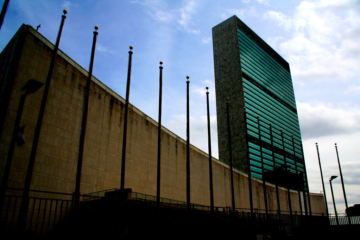Recent results in elections across Germany indicate that the Green party is hitting an electoral sweet-spot. In the Bavarian elections that took place in October, the Greens raided former SPD votes; amounting an impressive near-majority with nearly 42.5 per cent of the vote. It’s estimated that they managed to take 200,000 votes from the SPD and a further 170,000 votes away from Horst Seehofer’s conservative Christlich-Soziale Union (CSU). Similarly, in November’s Hesse state election, 142,000 former SPD voters and 108,000 Christian Democratic Union (CDU) voters abandoned Chancellor Angela Merkel’s “grand coalition” in favour of the Greens. In total, the CDU dropped 10 percentage points in Hesse while the Greens increased their share of the vote to an all-time best of 19 per cent. In fact, their rise has been so dramatic that according to a poll conducted by Infratest dimap on the 29th November, they are only 7 points behind the CDU.
Nevertheless, examining the Green party’s electoral achievements solely in relation to how they poll against the SPD, CDU, and the CSU, skews Germany’s current political landscape. With German voters seeking political alternatives in a changing Europe, the Green party is not the only political organisation experiencing a boost to its popularity. The Alternative für Deutschland (AfD) has ridden the wave of Western right-wing populism – stealing votes from centrists by prioritising concerns about Europe’s migration crisis and standing on an anti-multiculturalist platform. As German politics is becoming increasingly fractured, both AfD and Greens are benefitting from a society desperate for alternatives to the centrists. However, it would be a mistake to view the Green party as a leftist remedy to the solutions championed by the far right. Instead, there is a strong possibility that German politics will become increasingly polarised and fractured: the Greens seizing the progressive mantle, and the AfD championing a German-centric, reactionary politics. Despite the recent election of Annegret Kramp-Karrenbauer as the new leader of the CDU, the centrist’s political problem may not cease to continue. With her critics labelling her as “Mini-Merkel”, and her victory over Friedrich Merz who was broadly considered to be the “pro-change” candidate, it’s plausible that replacing the figurehead without a change of message may not be enough to quell popular concerns. As a result, the centre ground could continue to be vacated, driving voters further toward either extreme – even if it is only a means of opposing the other. For both, Green party and AfD, this is not a sustainable electoral strategy. A radical, visionary policy may be popular when a party desires to govern, but it is seldom effective once the party takes power. To stand a realistic chance of being in government, the Greens will have to prove they can maintain their progressive, reformist agenda while demonstrating they can compromise on certain issues in order to convince the broader electorate.

Under the circumstances, the Greens require more than environmental policy to build on their current position. Both Annalena Baerbock and Robert Habeck, the co-leaders of the German Green party, are determined to address this: embracing new policies that include families, education, the refugee crisis, and the European Union. This is part of a new move to demonstrate that the modern Green party is no longer just a protest movement, but a serious political party. According to their manifesto, the Greens intend to increase “investment into high-quality education, with better nursery school facilities and well-equipped schools, instead of spending money all-round and indiscriminately.” Similar policies advocate greater spending on family-related issues, marriage equality for all, and a liberal approach to the migration crisis. That being said, the Green’s environmental message still dominates their manifesto. If a policy area is not exclusively environmental, the Greens have managed to show their environmental message is interconnected with other subjects. Whether this is for ecological sustainability, renewable energy, tackling overfishing, or reducing greenhouse gases, the Green party has used these issues to inform everything from their foreign policy to their stance on new technology.
It is here that the Greens find themselves with a problem. Their forthright environmentalism has seeped its way into other issues, making the environment and other subjects one and the same. As a party that does not typically gain its support from the economically or socially disadvantaged, an environmentally focused political agenda will be unlikely to make inroads to poorer communities and win support that will be invaluable to their hopes of taking power. Their relationship with business is also a cause for concern. Caution towards technology that potentially erodes citizens’ privacy and demands to close power stations that aren’t environmentally friendly will not convince business that the Greens are the party of the future. Instead, the Greens can only hope to grab as much of the centrist vote as they can. If they can continue to do this, the option of being a minor partner in a coalition is likely. Anything further than this, however, seems not yet within reach.


